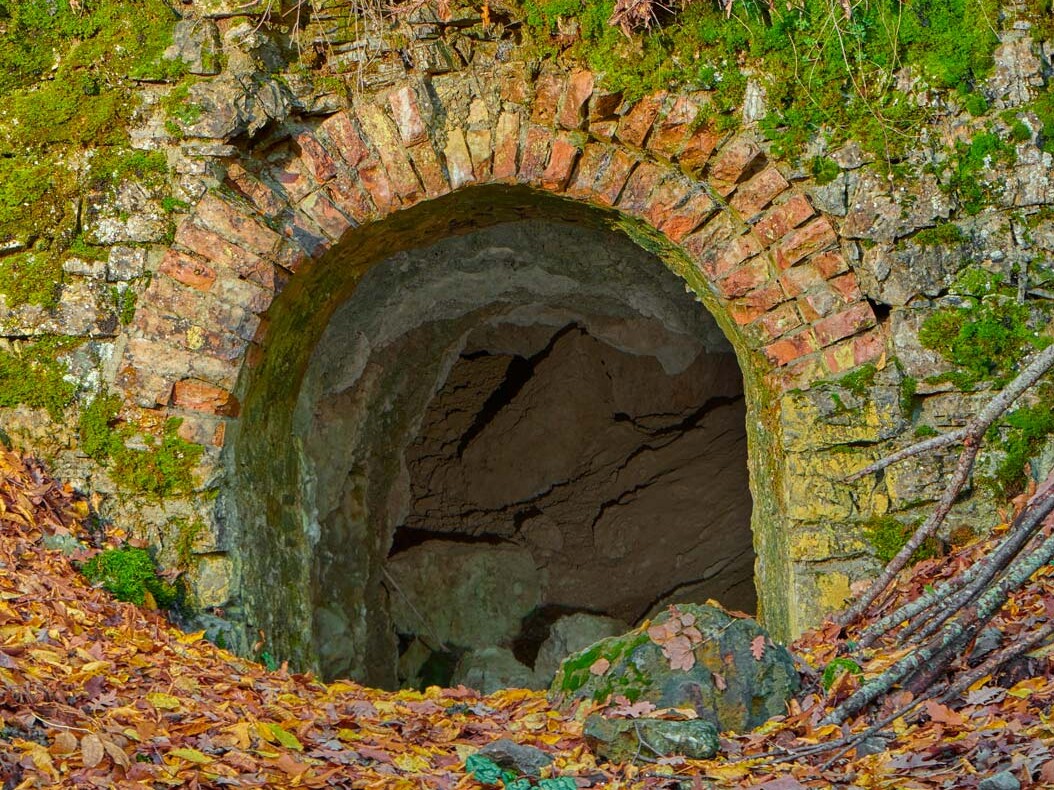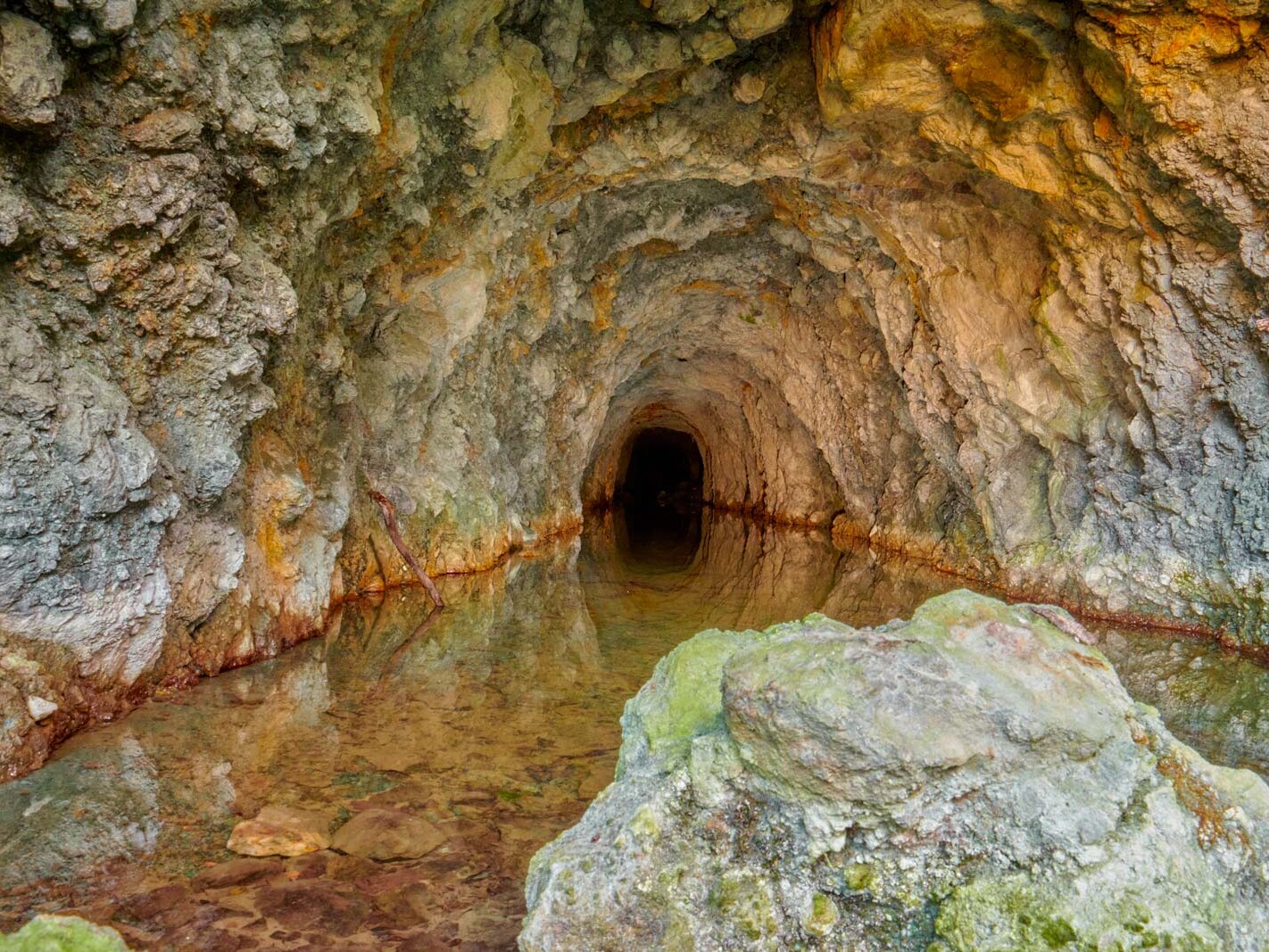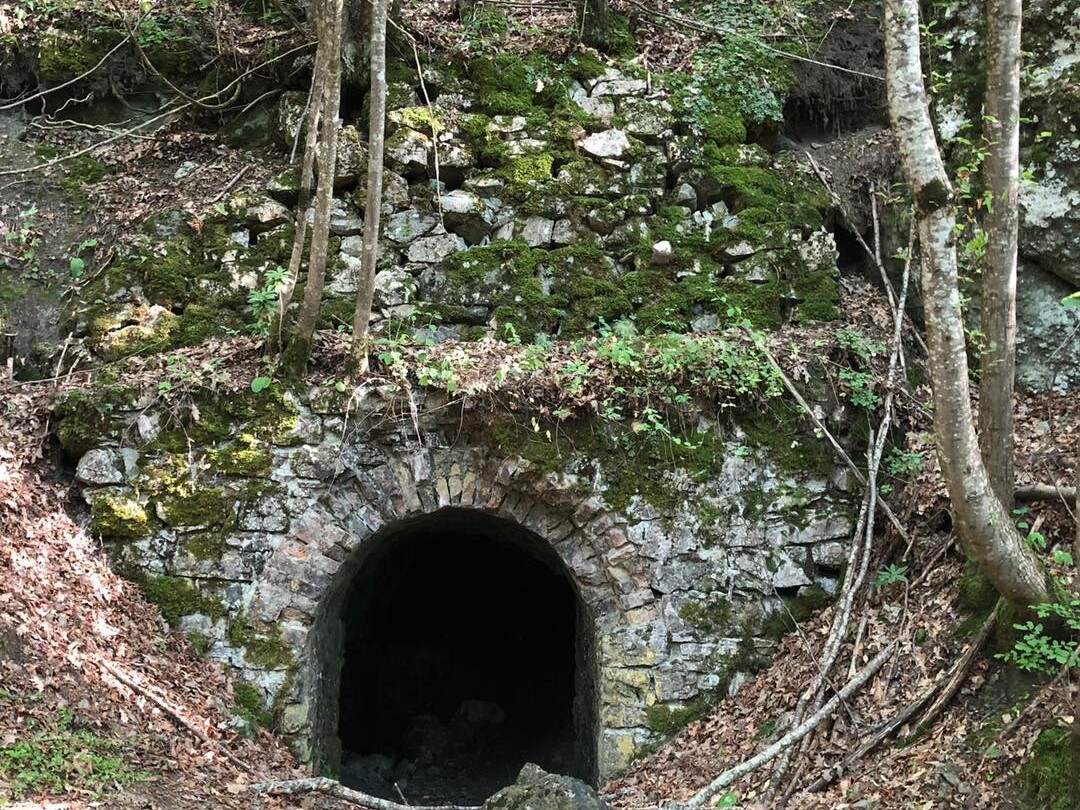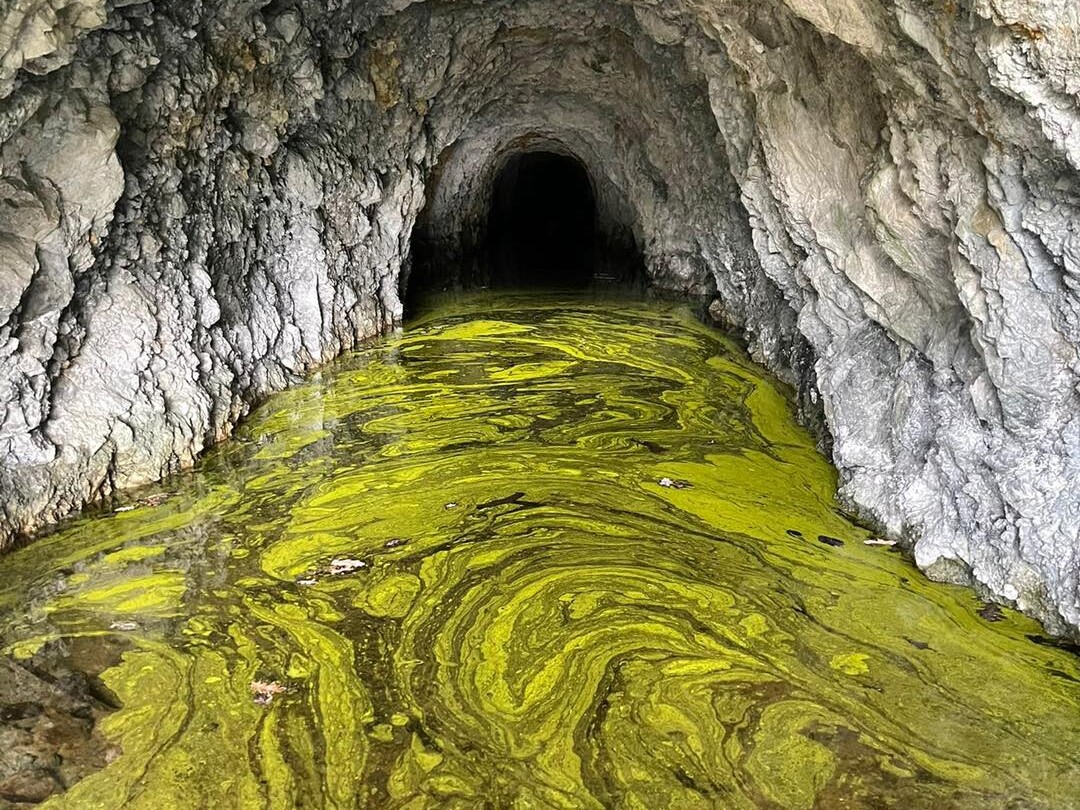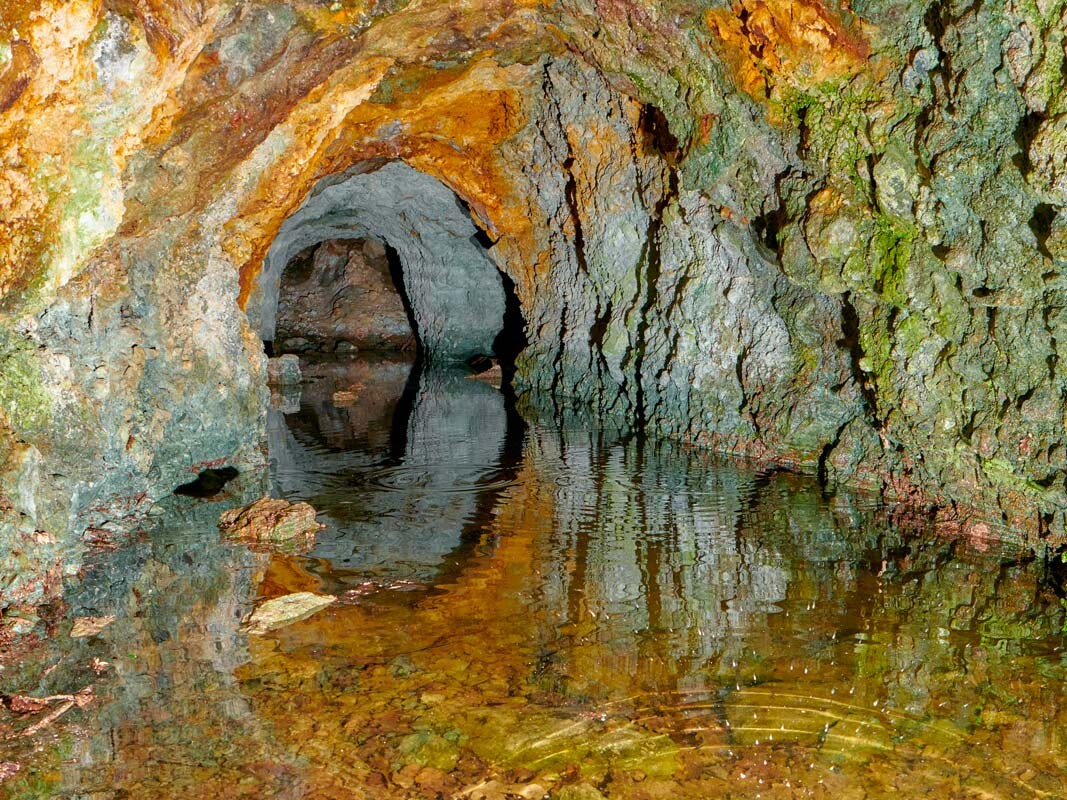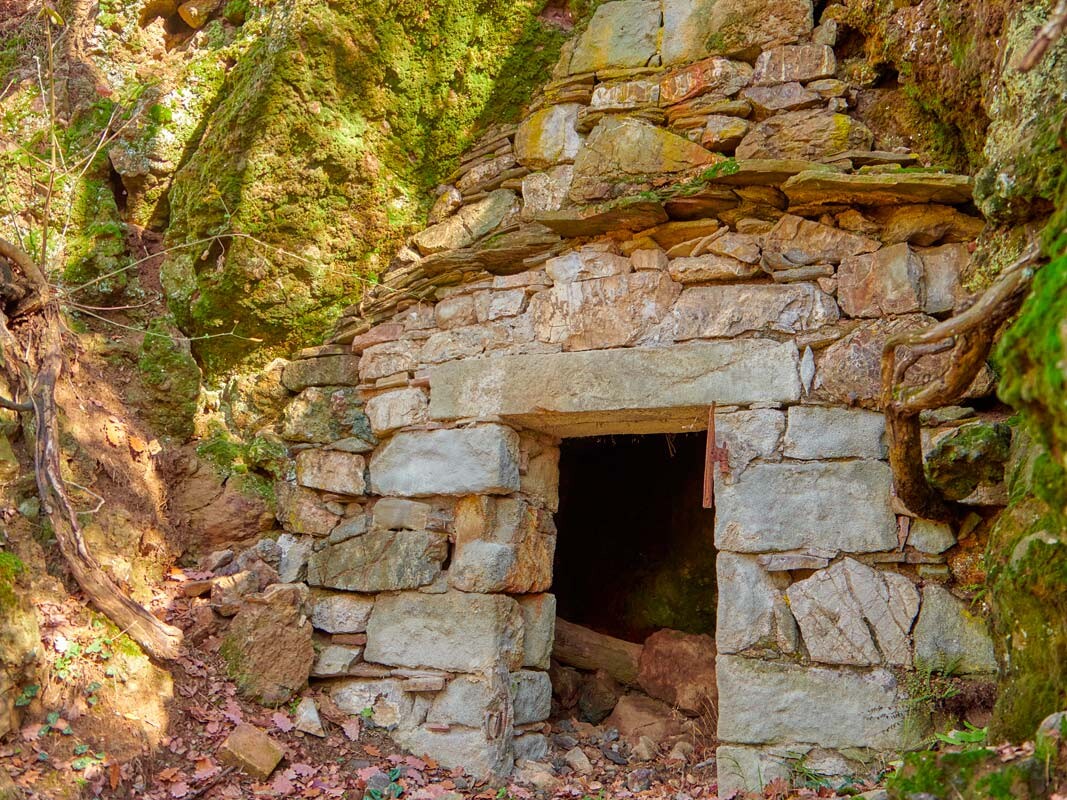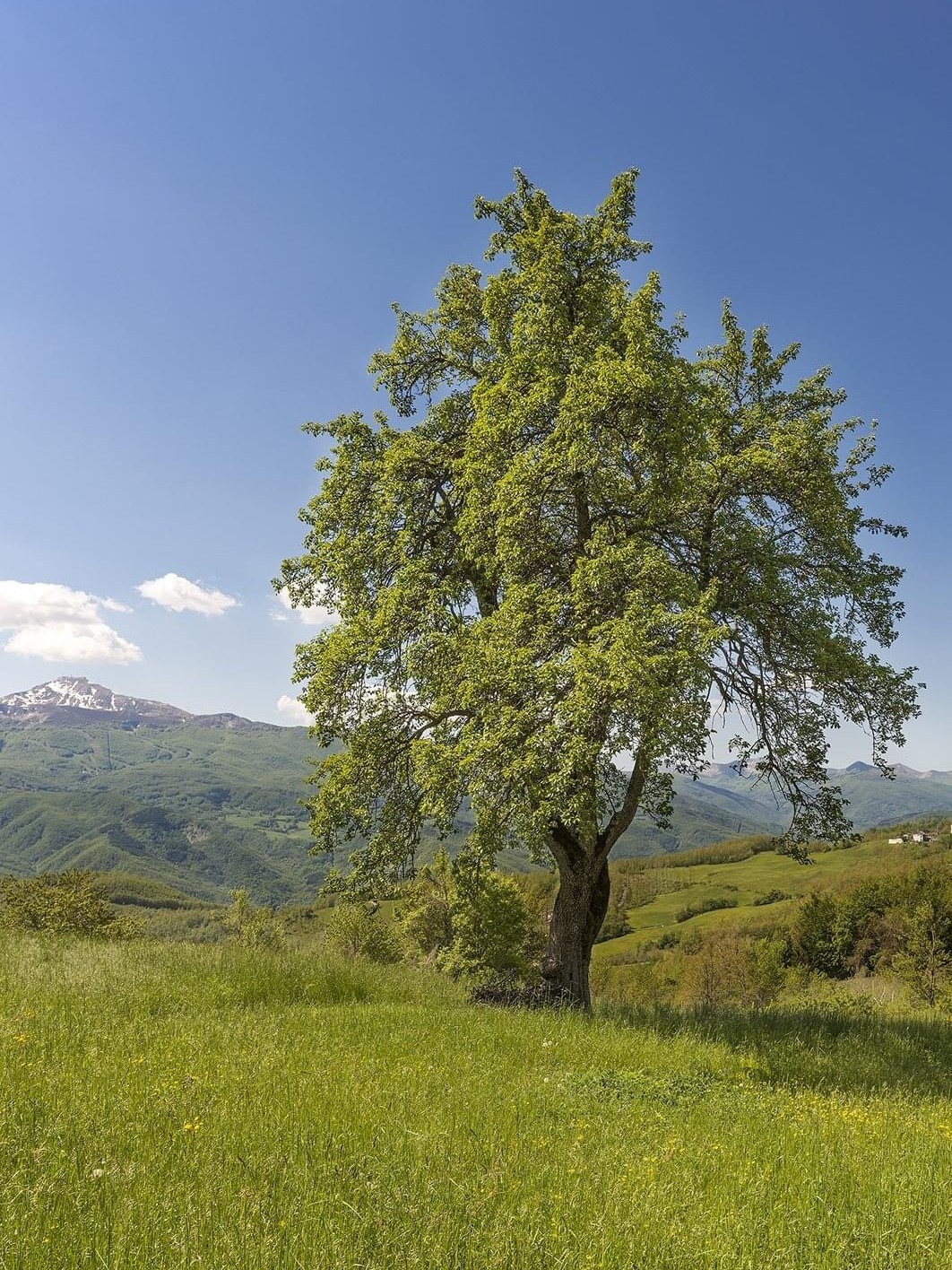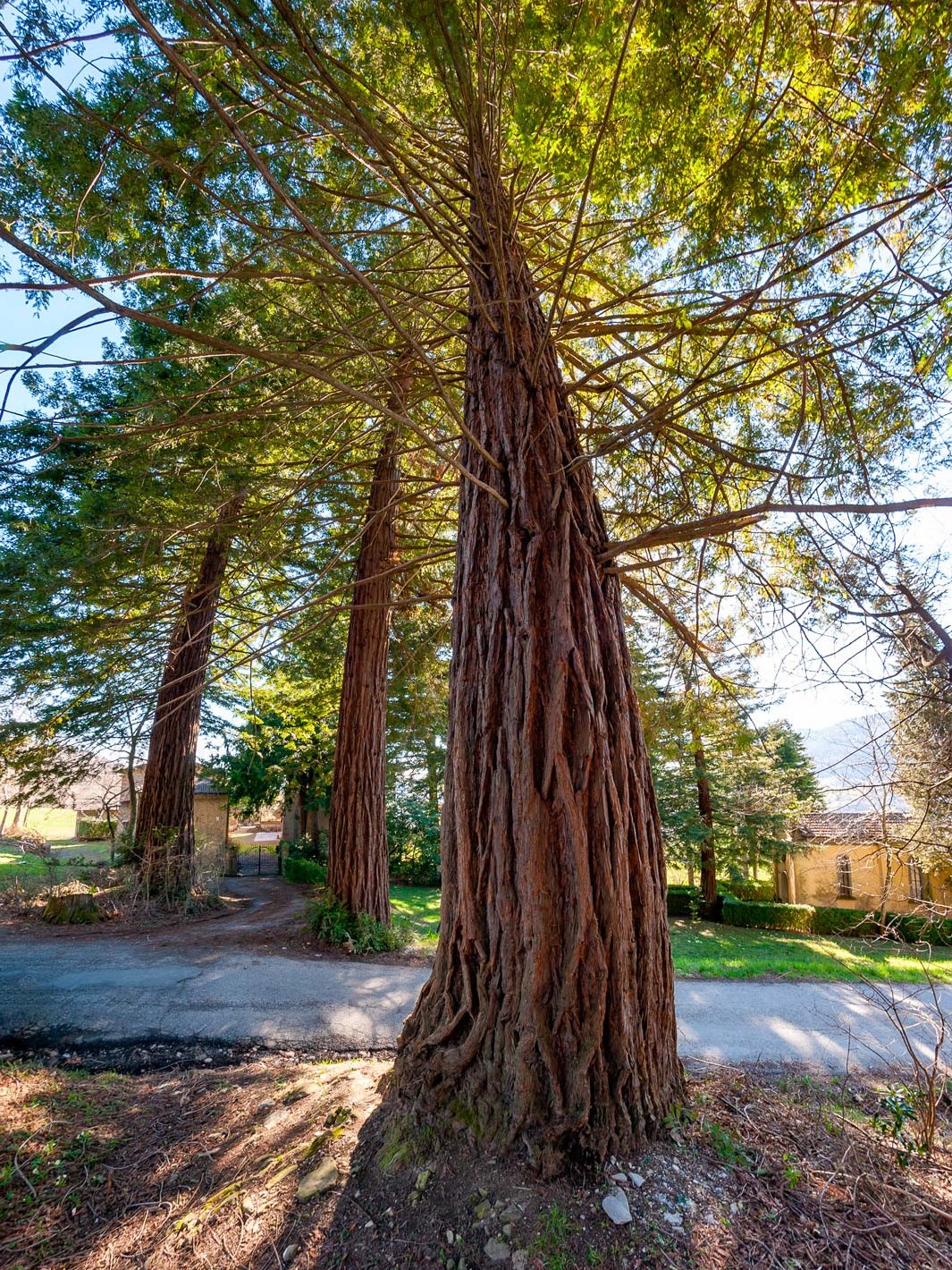In recent years, the Lastranera Copper Mines have become one of the most popular places of interest to visit in the Montecreto area.
The Montecreto Mines complex, recognised as a Geosite by the Region of Emilia Romagna in 2022, preserves three ophiolite domes emerging from the scaly clay, today almost completely hidden by abundant vegetation.
The Ophiolites, or “Green Stones of the Apennines”, take their name from the Greek “ofis”, or snake, and “lithos”, or rock: literally meaning “snake stone”. They are remnants of the oceanic crust of the vast, prehistoric Tethys Sea Basin, which lay between the Eurasian and African continental plates between 140 and 170 million years ago, during the Jurassic period.
From a petrographic point of view, Ophiolites are complexes of magmatic rocks mainly of basic and ultrabasic compositions altered to varying degrees (serpentinised or metamorphosed), within which can be found particular mineralisations and minerals such as quartz (SiO2), chalcopyrite (CuFeS2), pyrite (FeS2), datolite [CaB(OH)SiO4], and so forth.
A typical example is the chalcopyrite and pyrite mineralisation of the basaltic ophiolite block from the Ca’ Marsilio mining area in the municipality of Montecreto.
The Cà Gabriele Mine
The Cà Gabriele mine (extending to 36m) is the most impressive and the most exploited of the entire mining district.
It starts at the base of the ophiolite of the same name, extending into the rock for several metres and branching off into lateral tunnels. Currently, the entrance is almost completely blocked by mine debris and slag, and water infiltration makes its complete exploration impossible. On the west side of the ophiolite there are the remains of two assays for new galleries which were never built, and these have been transformed over time into cellars or tool sheds. A handcar railway was once used to bring extracted material from the Cà Gabriele mine for collection at the nearby mine, “Il Cinghio”.
The Cà Marsilio Mine
The Cà Marsilio mine (extending to 115m) is without doubt the best preserved of the entire mining district of Montecreto. Despite water infiltration damage, its entrance is accessible, and it is possible to go inside the mine for a few metres, and see some of the lateral branches. With the aid of a torch, the large copper vein running through the rock mass is clearly visible.
Lumps of fused metal, believed to be traces of a metallurgical furnace dating to Roman times, have been discovered at a place called ‘Le Borre’, situated immediately upstream from the mine. It is therefore likely that mining began in the area during the Roman period, with the first mine tunnels and shafts built then.
In the Middle Ages, the castle and village of Montecastagnaro stood in the immediate vicinity of the mine tunnels (the first mention of the castle and settlement dates back to 1029).
Chronicles report the destruction of the fortress by the troops of the city of Modena in 1240. In 1395 the castle was destroyed for a second time by soldiers from Lucca, who came to the aid of the Duke of Modena during the military campaign against Obizzo da Montegarullo of Frignano. The castle was later conquered on 1st June 1396 by soldiers from Lucca.
Between 1406 and 1408, the castle was once again destroyed by the troops of Marquis Nicolò III d’Este, while in 1429 an avalanche caused the castle to collapse and forced the inhabitants of Montecastagnaro to permanently retreat to neighbouring villages.
From then on, the archaeological mine site stood still until the years immediately preceding the Second World War.
In the lead up to the Second World War, with international sanctions in place, the Italian government introduced a campaign to source internal resources, and it was in this context that the Cà di Marsilio mines were started up, in order to extract minerals useful to the national economy; the extraction of ore began in 1939, and ended on 18th March 1959; in a letter sent to Montecreto council, the mining company justified the gradual running down of the mines: ” … the excavation work has been reduced as the quantity of ore discovered has not been very satisfactory”.
How to visit
Local tour guide groups are increasingly including the Montecreto Mines among the excursions they offer.
This is certainly a wonderful opportunity for those who wish to visit and learn all about the mines.
If you want to visit independently, you can follow the itineraries indicated in the leaflet that you can download at the link below.



